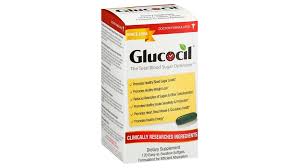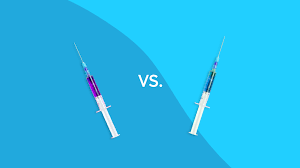Understanding Drostanolone Propionate
Drostanolone Propionate is an anabolic steroid derived from dihydrotestosterone (DHT). Initially developed for medicinal purposes, it has gained traction in the bodybuilding community for its efficacy in enhancing physical performance and improving body composition. The propionate ester allows for a quicker onset of action, which is one of the reasons many athletes prefer it.
Drostanolone Propionate, commonly known as Masteron, has emerged as one of the most sought-after anabolic steroids among bodybuilders and athletes. Its unique properties and benefits make it a popular choice for muscle building, especially during cutting cycles. This article will delve into the reasons behind its popularity, its effects on muscle growth, and the considerations for safe usage.
Key Features of Drostanolone Propionate
- Anabolic and Androgenic Properties: It has a favourable ratio of anabolic to androgenic effects, making it effective for muscle growth with fewer side effects.
- Non-aromatizing: Drostanolone Propionate does not convert to estrogen, reducing the risk of estrogenic side effects such as water retention and gynecomastia.
- Rapid Action: With a relatively short half-life, it can lead to noticeable results within a few weeks of use.
Benefits of Drostanolone Propionate for Muscle Building
Drostanolone Propionate’s popularity in muscle building stems from its multifaceted benefits. Here are some of the primary reasons bodybuilders choose this steroid:
1. Muscle Hardening and Definition
One of the standout features of Drostanolone Propionate is its ability to promote muscle hardness and definition. Bodybuilders often use it during cutting phases to enhance vascularity and achieve a more aesthetic look.
- Increased Muscle Density: Users frequently report a more solid appearance to their muscles, which is crucial for competitive bodybuilders.
- Fat Loss Support: It aids in reducing body fat while preserving lean muscle mass, allowing athletes to attain a shredded physique.
2. Preservation of Lean Muscle Mass
During a calorie deficit, preserving muscle mass becomes a primary concern for many bodybuilders. Drostanolone Propionate excels in this aspect:
- Anti-Catabolic Properties: It helps protect against muscle breakdown during weight loss, making it easier to maintain strength and size.
- Improved Recovery: Enhanced recovery times allow bodybuilders to train harder and more frequently without sacrificing muscle gains.
3. Minimal Side Effects
Compared to other anabolic steroids, Drostanolone Propionate is associated with relatively mild side effects, making it an attractive option for many users:
- Reduced Estrogenic Risks: Its non-aromatizing nature means there is less risk of side effects like water retention and bloating.
- Manageable Androgenic Effects: While some androgenic side effects may occur, they are generally less pronounced than with more potent steroids.
4. Enhanced Athletic Performance
Drostanolone Propionate is not just about aesthetics; it also contributes to overall athletic performance:
- Increased Strength: Users often experience significant strength gains, allowing for improved lifting performance.
- Boosted Endurance: Enhanced endurance levels enable athletes to sustain their workouts longer, maximizing training efficacy.
How to Incorporate Drostanolone Propionate into Your Cycle
For those considering adding Drostanolone Propionate to their regimen, it’s essential to understand the proper usage protocols. Here are some guidelines:
Dosage and Administration
- Typical Dosage: Most users take between 300 mg to 600 mg per week, depending on their goals and experience level.
- Injection Frequency: Given its short half-life, frequent injections (every other day or every third day) are necessary to maintain stable blood levels.
Cycle Recommendations
- Cutting Cycles: Drostanolone Propionate is often included in cutting cycles, combined with other steroids such as testosterone or trenbolone.
- Cycle Length: Most cycles last between 8 and 12 weeks to ensure optimal results without excessive side effects.
Considerations and Precautions
While Drostanolone Propionate offers numerous benefits, potential users should remain aware of the following considerations:
1. Side Effects Management
- Androgenic Effects: Monitor for signs of androgenic side effects like acne or hair loss. Adjust dosages as necessary.
- Regular Health Checkups: Regular monitoring of cholesterol and liver values can help mitigate potential health risks associated with steroid use.
2. Post-Cycle Therapy (PCT)
- Importance of PCT: After a cycle, it’s crucial to engage in post-cycle therapy to restore natural hormone levels and prevent potential side effects.
Where to Buy Legit Drostanolone Propionate
For those interested in using Drostanolone Propionate, sourcing a legitimate product is vital. Ensure to buy from reputable vendors to avoid counterfeit or low-quality products that could pose health risks. When searching for buy legit drostanolone propionate, prioritize suppliers with positive reviews and verified quality standards.
Conclusion
Drostanolone Propionate stands out in the bodybuilding community for its effectiveness in promoting muscle growth, definition, and overall athletic performance. Its unique properties, combined with a lower incidence of side effects, make it a popular choice for those looking to enhance their physique, particularly during cutting phases.
By understanding the benefits and guidelines for safe usage, bodybuilders can harness the potential of Drostanolone Propionate to achieve their fitness goals. As always, prioritizing health and well-being is essential when incorporating any anabolic steroid into your regimen.

















